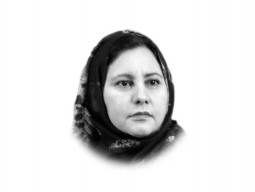
Since the flow of information and propaganda is no more bound to be depended on conventional media, the extremists and their propagandist sympathisers seem better equipped to use social media platforms such as Facebook, Twitter, Whatsapp and Instagram apart from running their own web pages and FM radio stations. Besides libeling the victims to justify their horrendous acts of terror such as attacks on shrines, marketplaces, schools, courts and government employees, the militants aim to exploit weaknesses in the system by making references to ‘injustice’, ‘corruption’, ‘inequality’ and ‘unemployment’. Obviously, the target is the semi-literate or illiterate youth who, already under the influence of demagogic politicians and religious leaders, believe sharia as panacea to all ills in the society.
In messages circulated to journalists via Whatsapp and private email accounts after the August 2016 attack on lawyers in Quetta and a similar attack on lower courts in Tangi, Charsadda district, last month, the militants mentioned the victims as the upholders of “Kufri Nizaam” or “infidel system”. Commenting on the importance of words in his book Fighting the War of Ideas Like a Real War, Professor J Michael Waller writes: “Words and images are the most powerful weapons in a war of ideas. Used skillfully, they can serve the cause well. Used carelessly, they cause collateral damage and the equivalent of death by friendly fire.”
The Taliban chief Mullah Fazlullah justified the December 2014 killing at the Army Public School in Peshawar with the pretext that the victims were destined to become the upholders of the “infidel system” that he and his fighters are trying to demolish. There was enough ground with the government to let the countrymen know that Noorullah and Saifullah, two of the 140 massacred students, used to reach the mosque well before their father every morning. Unfortunately, with the exception of a few meetings, statements, construction of a monument and release of a song highlighting military gains against the militants, we don’t see any concrete strategy to counter the Taliban propaganda.
Addressing a seminar at Jamia Naeemia in Lahore on this past Saturday, PM Nawaz Sharif’s appeal to religious leaders to present a counter-narrative to extremist mindset was a timely step. But can there be a concrete strategy in full light of the day to counter the lies filling the gaps left open by the government in terms of information?
Pakistan, using its military might, has already defeated the Taliban. But still far behind from countering and defeating the narrative constructed over the past several decades, thanks to the country’s support for jihadi elements in Kashmir and the Taliban insurgency in Afghanistan.
Besides coming out with a comprehensive strategy of disseminating factual information through conventional and social media platforms, and challenging the jihadi and extremist narrative from public forums such as schools, mosques, madrassa and community levels, the government also needs to remove the hurdles obstructing the free flow of information in Fata, where the Taliban’s threatening phone calls, night letters and radio broadcast keep the locals in a constant state of disquiet. It was fear combined with information vacuum that forced the fiercely independent tribesmen succumbed to the al-Qaeda and Taliban propaganda in the years following the overthrow of Taliban regime in Kabul in late 2001. Failure on part of the state to rescue the locals hardened the fear and the end result was Taliban occupation of the whole area.
Since the government of Pakistan has now entered the rebuilding stage after defeating the Fata-based militants militarily, it is pertinent to focus on building a strong anti-Taliban narrative by creating awareness among people with the free flow of unbiased and factual information. The US army’s Field Manuals FM 3-24 correctly states that “some of the best weapons (in counterinsurgency) do not shoot.” It is time to fire those never-shooting weapons.
Published in The Express Tribune, March 15th, 2017.
Like Opinion & Editorial on Facebook, follow @ETOpEd on Twitter to receive all updates on all our daily pieces.















COMMENTS
Comments are moderated and generally will be posted if they are on-topic and not abusive.
For more information, please see our Comments FAQ